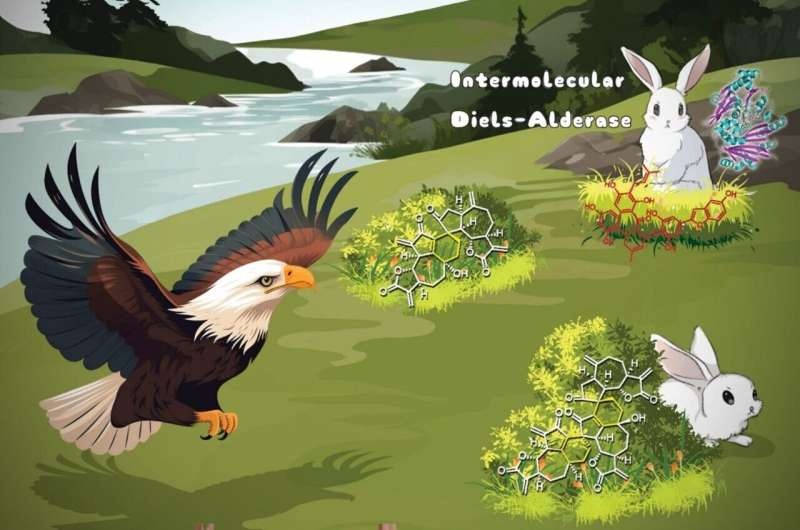Discover the cutting edge of enzyme catalysis research, as scientists reveal how they are decoding the secrets of green chemical synthesis for a brighter tomorrow.

Challenging Synthetic Chemistry
The materials that most of us depend on every day are the result of synthetic chemistry, and it is central to enabling modern society. But traditional chemical synthesis is highly inefficient and environmentally unfriendly.
Come back to the world of enzyme catalysis, one potentially game-changing solution which offers a more sustainable and efficient way for chemical synthesis. A team led by Peking University’s College of Chemistry and Molecular Engineering has been making ground-breaking progress in this field for a decade now.
In their newest publication in the prestigious journal Accounts of Chemical Research, they describe the latest advances in the discovery, mechanism, and synthetic application of a unique class of enzymes called intermolecular Diels–Alderases (D–A). These enzymes are capable of catalysing an important chemical reaction known as the Diels-Alder reaction, which is essential in natural product and drug design.
Deciphering How Plants Make Natural Products
Professor Lei Xiaoguang’s research team has uncovered the mystery of plant natural product biosynthesis from scratch, focused on the function of D–A enzymes. Using the technique of biomimetic total synthesis combined with chemical proteomics, the researchers discovered less-known enzyme catalytic function from nature.
The extensive structure–function relationship data presented herein yield key insights into both the catalytic and evolutionary mechanisms of these exceptional enzymes, which together form a blueprint for the rational discovery and engineering of novel D–A enzymes. This discovery not only deepens our knowledge on plant natural product biosynthesis, but also has the potential to revolutionize drug and other valuable compounds development.
They have discovered a new D–A enzyme that is intermolecularly catalyzed and was considered to be pivotal advancement in their research work. The discovery of the enzyme, and elucidation of its mechanism of action shine a spotlight on a new way to get to D–A products efficaciously, an important part in developing drugs.
Conclusion
The team’s work at Peking University has major implication for synthetic chemistry practice. With enzyme catalysis, which is hundreds of billions of times more efficient than traditional synthetic chemistries, they have made possible new paths to realizing long-term sustainable production solutions for essential materials such as clothing and medicine. This series of these decarboxylase enzymes uncovered in the work represents a significant leap toward understanding how plants produce natural products, and opens avenues to discovery novel enzymatic tools for a sustainable synthesis.
